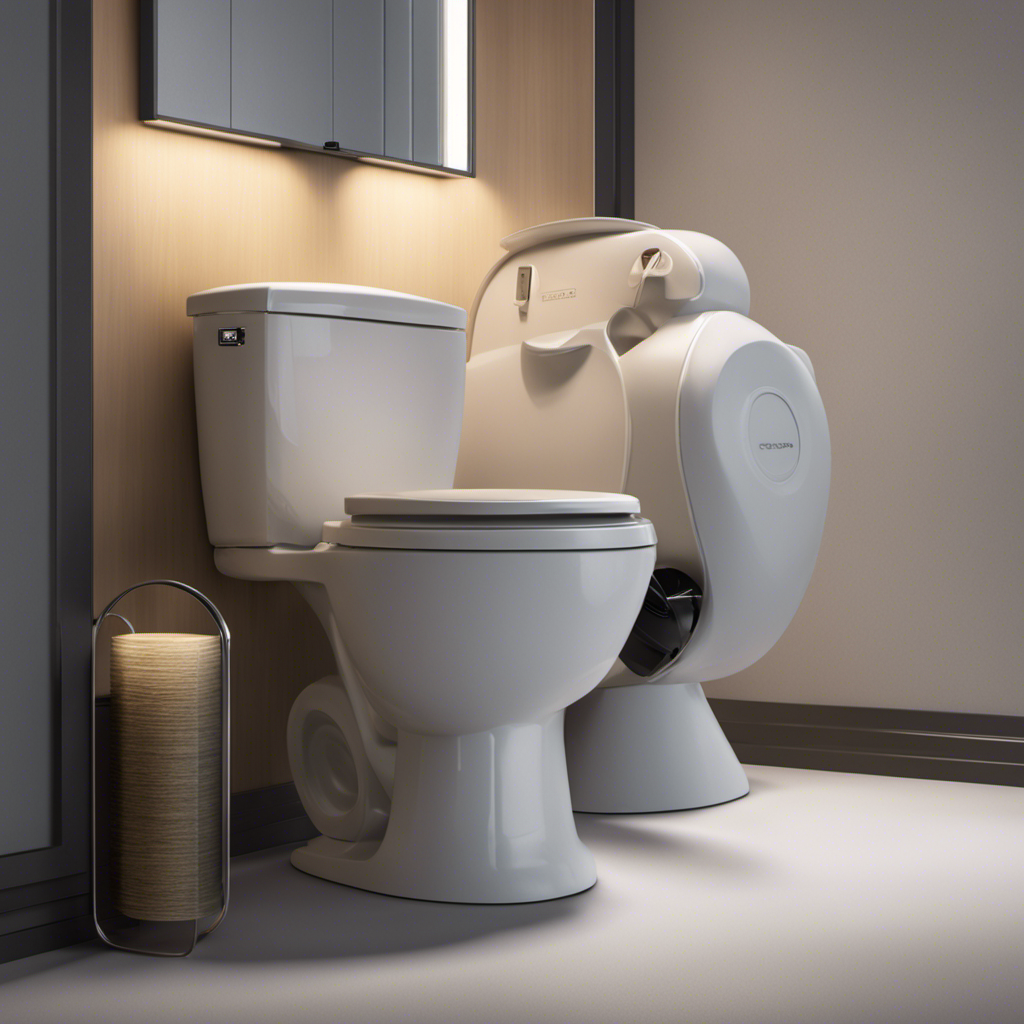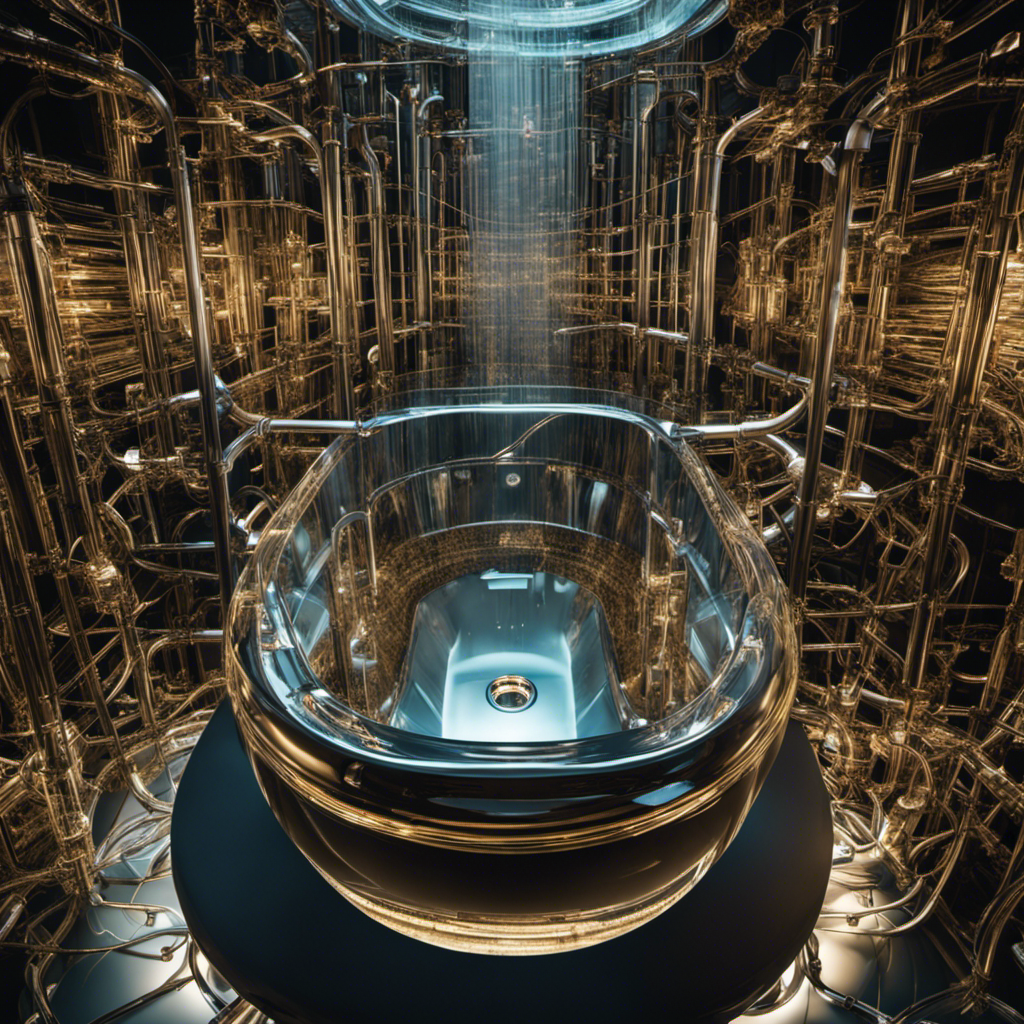I’ll show you how to quickly unclog a toilet using simple steps and common tools.
Trust me, I’ve been in your shoes before, and there’s nothing more frustrating than a clogged toilet. But don’t worry, I’ve got you covered.
In just a few minutes, you’ll be able to say goodbye to those pesky clogs and get back to your day.
So, let’s roll up our sleeves and dive into this step-by-step guide to unclogging your toilet in no time.
Key Takeaways
- Understanding the common causes of toilet clogs such as rising water level, slow drainage, and overflowing water from the bowl.
- Gathering the necessary tools and materials including a plunger with a flange, rubber gloves, and a sealed trash bag for proper disposal of clog debris.
- Using a plunger effectively by positioning it over the drain hole, creating a strong seal, applying downward pressure, and using firm and controlled strokes.
- Trying alternative methods like chemical solutions or calling a professional plumber for stubborn clogs, and taking preventive measures to avoid future clogs.
Understanding the Causes of Toilet Clogs
Understanding the causes of toilet clogs can help you prevent them in the future. By being aware of the common toilet clog signs and troubleshooting toilet clogs, you can save yourself from the hassle and inconvenience of a clogged toilet.
One of the most common signs of a toilet clog is when the water level in the bowl rises or takes longer to drain after flushing. Another sign is if the water starts to overflow from the bowl.
Troubleshooting toilet clogs involves using a plunger to create suction and dislodge the clog. If the plunger doesn’t work, you can try using a toilet auger to break up the clog. Remember to always be cautious and avoid using excessive force, as it can damage the toilet.
Gathering the Necessary Tools and Materials
First, you’ll need to gather the necessary tools and materials to fix the clogged toilet. Start by choosing the right plunger for the job. Look for a plunger with a flange, as this will provide better suction and make the unclogging process easier.
Additionally, make sure you have a pair of rubber gloves to protect your hands from any potential mess. Once you have the plunger and gloves, it’s important to properly dispose of the clog debris. Avoid flushing it down the toilet again, as this can lead to further clogs.
Instead, dispose of the debris in a trash bag and seal it tightly before throwing it away. Remember, proper disposal is essential to prevent any future issues with your toilet.
Using a Plunger to Unclog the Toilet
Once you’ve got the right plunger, it’s important to create a strong seal around the toilet drain. Start by positioning the plunger over the drain hole, ensuring it covers the entire opening. Apply downward pressure to create suction.
Begin plunging with firm, controlled strokes, using your body weight to generate force. The key is to create a push-and-pull motion to dislodge the clog. Avoid using excessive force, as it can damage the toilet.
Be patient and persistent, as it may take several attempts to unclog the toilet. Common mistakes when using a plunger include not creating a proper seal, plunging too forcefully, or not plunging enough times.
Trying Alternative Methods for Stubborn Clogs
To tackle stubborn clogs, you might want to consider trying alternative methods that can help clear the blockage in your toilet.
Chemical solutions for unclogging toilets can be effective if used correctly. Start by pouring a generous amount of the solution into the toilet bowl. Let it sit for the recommended time, usually about 15 minutes. Then, use a toilet brush to agitate the solution and break up the clog. Finally, flush the toilet to see if the blockage has cleared.
If these alternative methods don’t work, it may be time to call a professional plumber for stubborn clogs. They have the expertise and specialized tools to handle even the toughest clogs and ensure your toilet is functioning properly again.
Preventing Future Toilet Clogs
If you want to prevent future toilet clogs, make sure to avoid flushing large amounts of toilet paper or other non-flushable items. Here are some toilet maintenance tips to keep your toilet working properly:
- Use only the recommended amount of toilet paper and flush it in small increments.
- Avoid flushing items like baby wipes, cotton balls, or dental floss, as they can easily cause clogs.
- Regularly clean your toilet to remove any buildup or residue that could lead to clogs.
Proper flushing techniques are also important in preventing clogs. Remember to:
- Use a strong, steady flush to ensure that waste is fully cleared from the bowl.
- Teach household members to only flush items that are meant to be flushed.
- If a clog does occur, address it promptly to prevent further damage.
Frequently Asked Questions
Can I Use a Chemical Drain Cleaner to Unclog a Toilet?
I wouldn’t recommend using a chemical drain cleaner to unclog a toilet. It can be unsafe and may damage the pipes. There are alternative methods that are more effective and safer to unclog a toilet.
How Do I Know if the Clog Is Too Severe for a Plunger to Work?
If the clog is too severe for a plunger, alternative solutions like a toilet auger or a drain snake can be tried. If those don’t work, it may be time to seek professional help.
Are There Any Specific Alternative Methods That Are Safe to Use on a Clogged Toilet?
There are alternative methods to unclog a toilet. One option is using a toilet snake, which helps break up the clog. Another method is the hot water method, where you pour hot water into the toilet to dissolve the blockage.
Can Using Excessive Toilet Paper Cause a Clog?
Using excessive toilet paper can definitely cause a clog in the toilet. It’s important to be mindful of how much paper you use. If you do run into a clog, there are alternative methods for unclogging toilets that you can try.
What Should I Do if None of the Unclogging Methods Work?
If none of the unclogging methods work, I would consider alternative solutions like using a toilet auger or a drain snake. If all else fails, I would call a plumber to fix the problem.
Conclusion
In the journey of unclogging a toilet, I have learned that patience and the right tools are key. Just like a river flowing smoothly, our toilets deserve the same courtesy.
By understanding the causes of clogs and using a plunger as our guiding light, we can navigate through any blockage. And if stubborn clogs persist, fear not! There are alternative methods to explore.
Remember, prevention is the ultimate hero in this tale. So, let’s continue this dance with our toilets, keeping them clean and clog-free for years to come.










